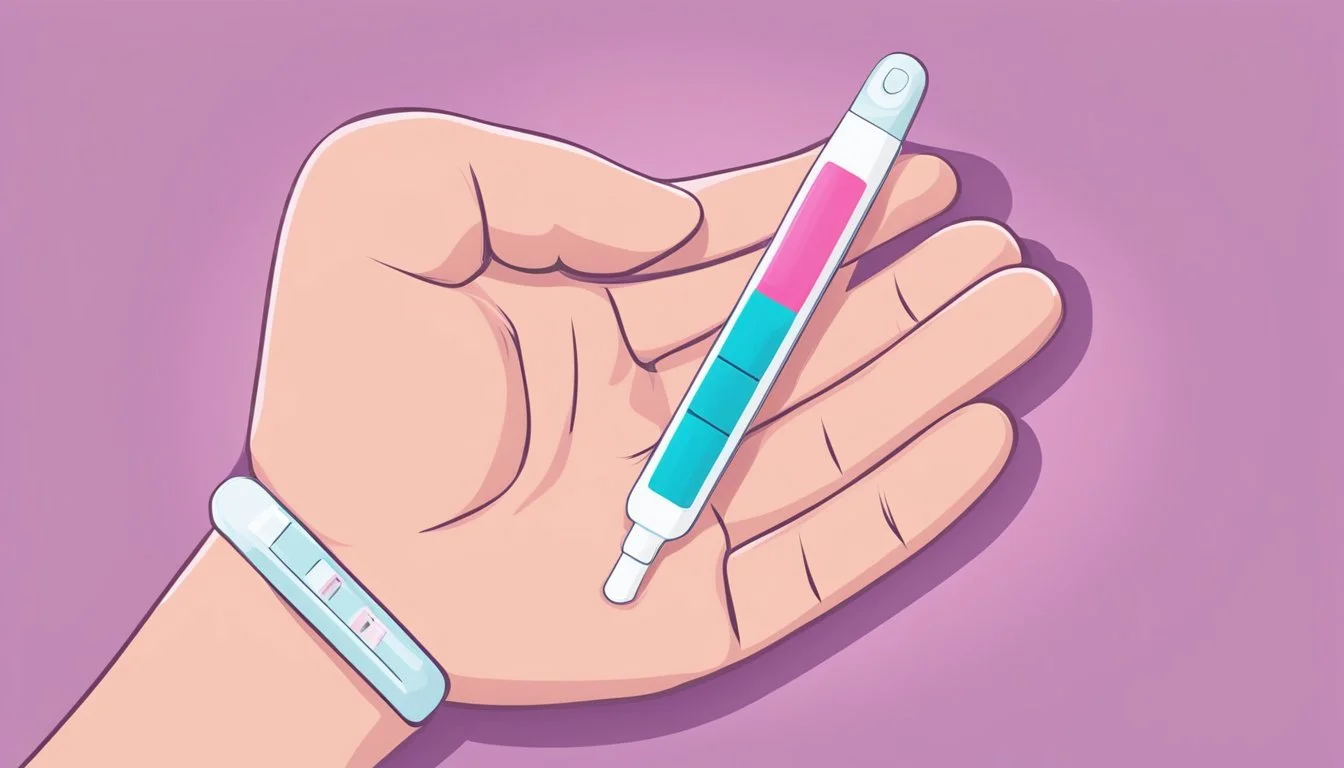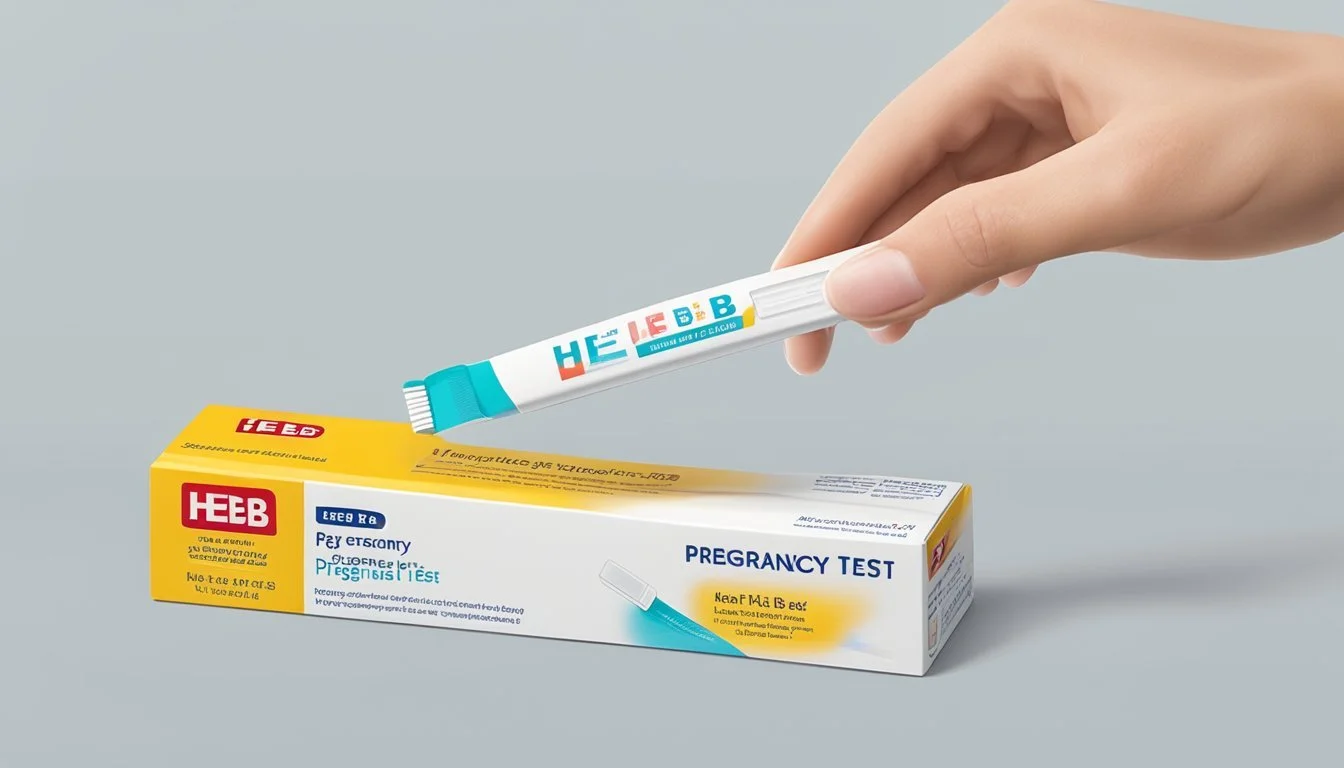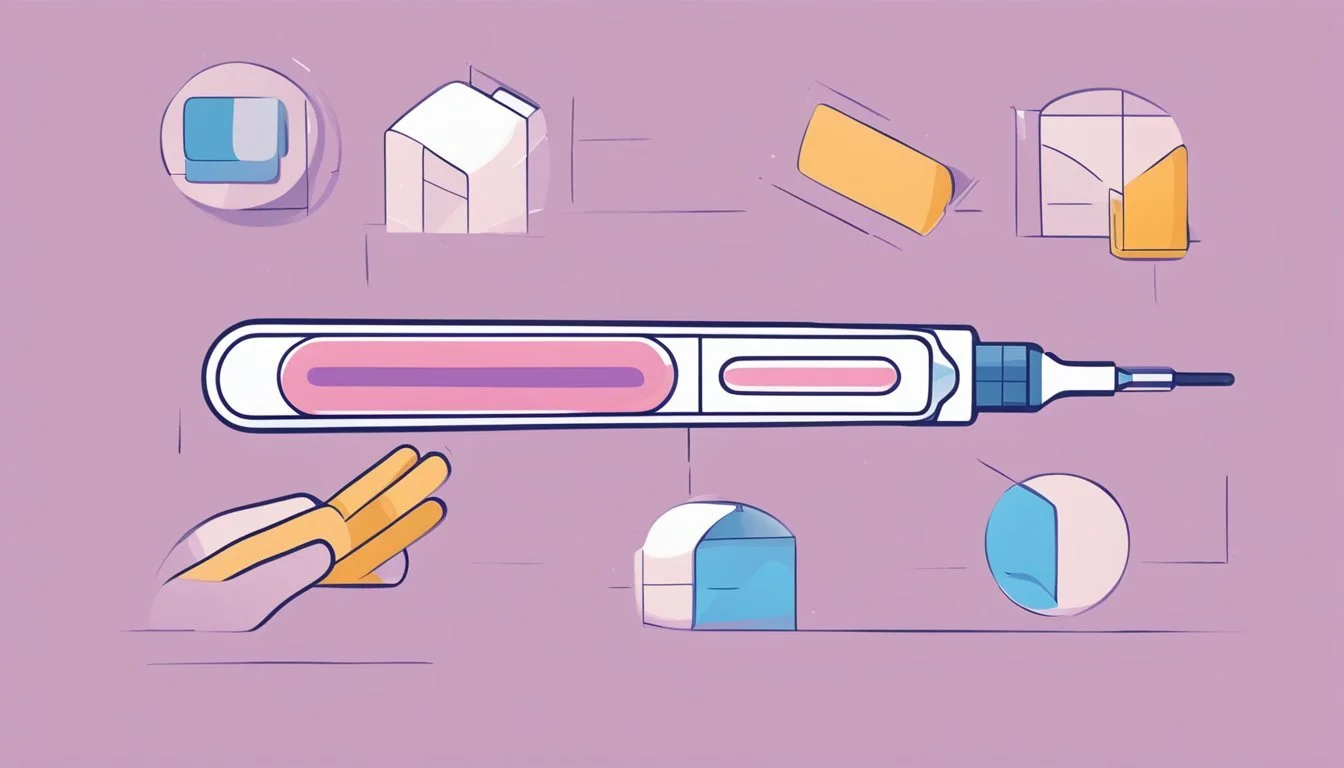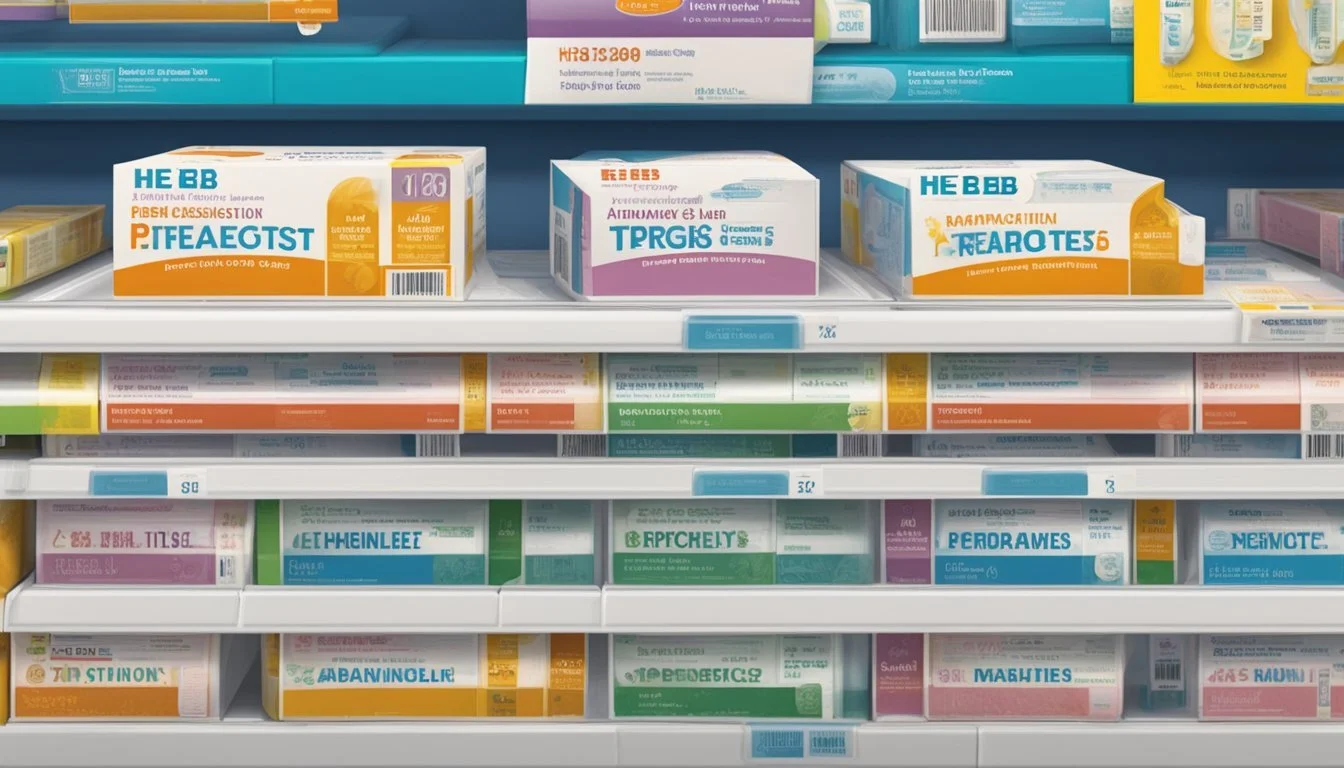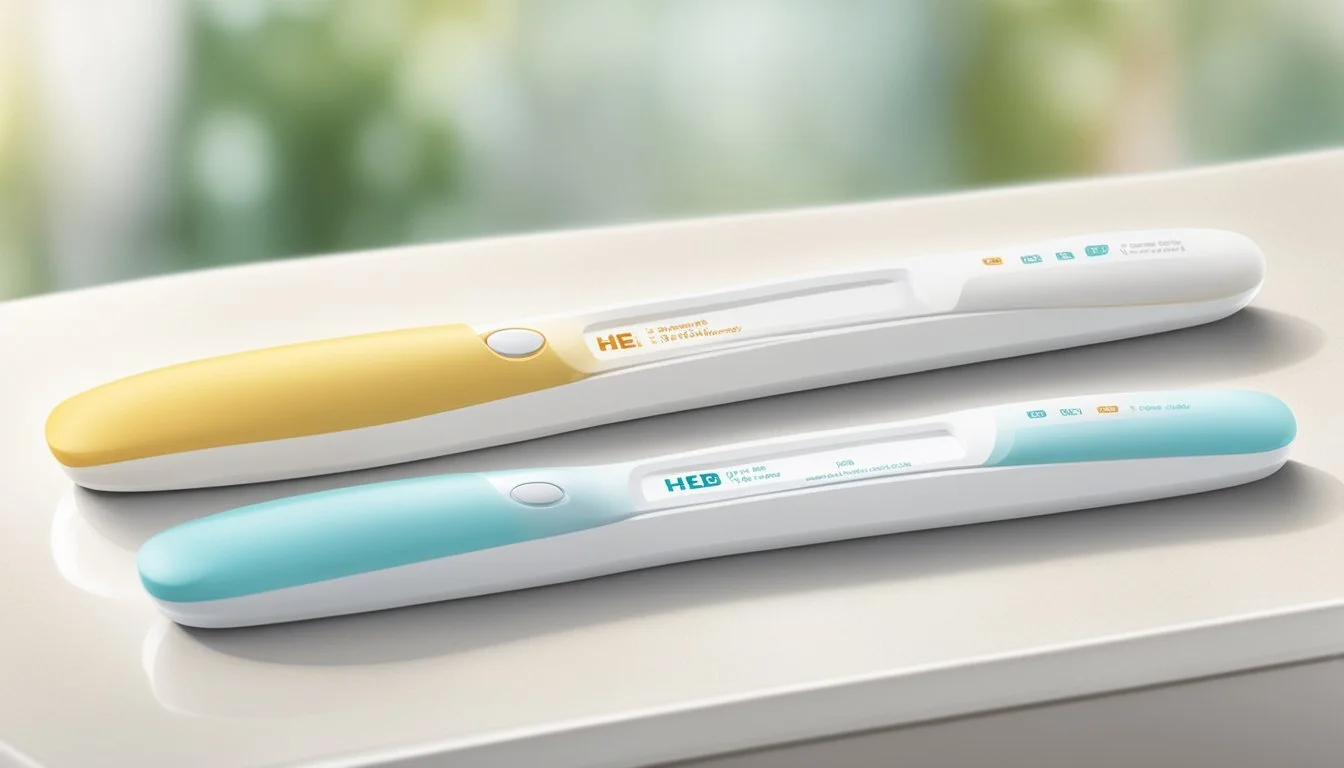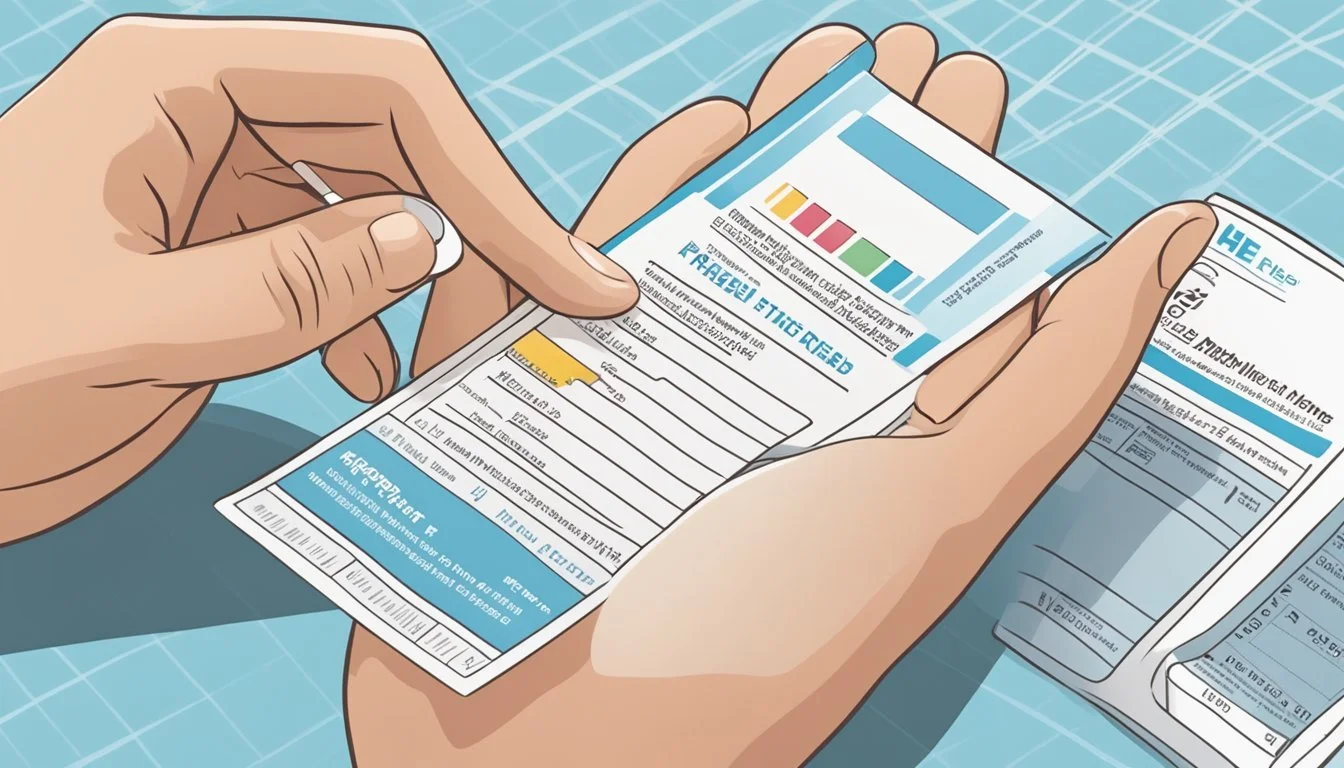H-E-B Pregnancy Test
Reliable Results in Minutes
Pregnancy tests provide a quick and convenient way to detect early signs of pregnancy from the comfort of home. H-E-B offers several reliable options for women seeking answers about a potential pregnancy. H-E-B pregnancy tests are 99% accurate from the day of the expected period and can detect pregnancy hormones up to 5 days before a missed period.
These at-home tests check for the presence of human chorionic gonadotropin (hCG) in urine. H-E-B carries digital tests that display clear results, as well as traditional cassette-style tests. The tests are designed for early detection, allowing women to get results as soon as possible.
H-E-B pregnancy tests are accessible and affordable alternatives to more expensive name-brand options. They provide the same level of accuracy while being readily available at H-E-B stores. Women can choose between single tests or multi-packs depending on their needs.
Understanding Pregnancy Tests
Pregnancy tests provide a reliable way to detect pregnancy early on. They come in different types and can be used at home or in clinical settings.
Types of Pregnancy Tests
There are two main types of pregnancy tests: urine tests and blood tests. Urine tests are the most common and can be done at home. They include stick tests, midstream tests, and strip tests. Blood tests are typically performed in clinical settings and can detect pregnancy earlier than urine tests.
Home pregnancy tests are widely available over-the-counter. They offer quick results and high accuracy when used correctly. Some digital tests display results as "pregnant" or "not pregnant," while traditional tests show lines or symbols.
How Pregnancy Tests Work
Pregnancy tests detect the presence of human chorionic gonadotropin (hCG) in urine or blood. This hormone is produced after a fertilized egg implants in the uterus, usually about 6-12 days after conception.
As pregnancy progresses, hCG levels increase rapidly. Most home pregnancy tests can detect hCG as early as the first day of a missed period. Some sensitive tests claim to detect pregnancy up to 5 days before a missed period.
Accuracy improves the longer you wait after a missed period to test. For best results, test first thing in the morning when urine is most concentrated.
Home Pregnancy Tests vs. Clinical Tests
Home pregnancy tests offer convenience and privacy. They're easy to use and provide results within minutes. Most are over 99% accurate when used correctly.
Clinical tests, performed at a doctor's office or lab, include urine and blood tests. Blood tests can detect lower levels of hCG, potentially identifying pregnancy earlier. They also measure exact hCG levels, which can help track early pregnancy progress.
While home tests are reliable, a clinical test can confirm results and provide additional information. Healthcare providers may recommend clinical testing for definitive results or to monitor pregnancy development.
H-E-B Pregnancy Test Overview
H-E-B offers reliable at-home pregnancy tests that provide quick and accurate results. These tests detect human chorionic gonadotropin (HCG) in urine to determine pregnancy status with high sensitivity and precision.
Product Specifications
H-E-B pregnancy tests come in both digital and analog formats. The digital test features an easy-to-read display, while the analog test uses traditional line indicators. Each package typically includes one or two tests.
The tests are designed for early detection, capable of identifying pregnancy up to 5 days before a missed period. H-E-B tests boast 99% accuracy from the day of the expected period.
These tests are compact and portable, making them convenient for use at home or while traveling. They have a long shelf life when stored properly, ensuring reliability when needed.
Usage Instructions
Using an H-E-B pregnancy test is straightforward:
Remove the test from its foil wrapper.
Hold the absorbent tip in your urine stream for 5 seconds.
Lay the test flat on a clean, dry surface.
Wait 3 minutes for results to appear.
For the digital test, results will be displayed as "Pregnant" or "Not Pregnant" on the screen. The analog test shows one line for negative and two lines for positive results.
It's crucial to read and follow the enclosed instructions carefully. Testing first thing in the morning, when urine is most concentrated, can improve accuracy.
Sensitivity and Accuracy of H-E-B Tests
H-E-B pregnancy tests are highly sensitive, capable of detecting low levels of HCG. This sensitivity allows for early pregnancy detection, as early as 5 days before a missed period.
The tests boast 99% accuracy from the day of the expected period. This high level of accuracy is comparable to leading brands in the market.
False negatives can occur if testing too early or if urine is too diluted. For the most reliable results, it's recommended to test on or after the first day of a missed period.
H-E-B tests are designed to minimize false positives, but certain medical conditions or medications can affect results. If in doubt, it's advisable to consult a healthcare professional or take a second test.
Interpreting Test Results
Properly reading and understanding H-E-B pregnancy test results is crucial for accurate interpretation. Timing and technique play key roles in obtaining reliable outcomes.
Reading the Results
H-E-B pregnancy tests typically display results through lines or digital readouts. For line tests, two lines indicate a positive result, while one line signifies a negative outcome. Digital tests show "Pregnant" or "Not Pregnant" directly on the screen.
The test line may appear faint in early pregnancy due to lower hCG levels. Any visible second line, regardless of intensity, suggests a positive result.
Always check the test within the recommended time frame, usually 3-5 minutes. Results read after this period may be inaccurate due to evaporation lines.
Understanding False-Negatives
False-negative results can occur if testing too early or using diluted urine. hCG levels may not be detectable until after a missed period in some cases.
Factors contributing to false-negatives include:
Testing before hCG reaches detectable levels
Using urine that's too diluted
Expired or improperly stored tests
Certain medications interfering with results
To minimize false-negatives, use first-morning urine and follow instructions carefully. Avoid excessive fluid intake before testing.
When to Retest
Retesting is advisable if the initial result is negative but pregnancy is still suspected. Wait 3-7 days after the first test to allow hCG levels to rise if conception occurred.
Consider retesting if:
The first test was taken before a missed period
Pregnancy symptoms persist despite a negative result
The initial test was performed incorrectly
For most accurate results, test 1-2 weeks after a missed period. If uncertainty persists after multiple home tests, consult a healthcare provider for a blood test or ultrasound.
The Accuracy of Home Pregnancy Tests
Home pregnancy tests offer a convenient way to detect pregnancy early. Most claim 99% accuracy when used correctly, but several factors can influence their reliability.
Factors Affecting Accuracy
The timing of the test is crucial for accuracy. Taking the test too early, before the expected period, may lead to false negatives. The level of human chorionic gonadotropin (hCG) in urine doubles every 2-3 days during early pregnancy. Testing after a missed period increases the chance of detecting hCG.
Test sensitivity varies between brands. Some can detect lower hCG levels, allowing for earlier detection. Following instructions precisely is vital. Proper urine collection and waiting the specified time before reading results impact accuracy.
Certain medications or medical conditions can interfere with results. Fertility treatments containing hCG may cause false positives. Diluted urine from excessive fluid intake can lead to false negatives.
Expiration and Storage Considerations
Expired tests may provide inaccurate results. Always check the expiration date before use. Proper storage is essential to maintain test reliability.
Store tests in a cool, dry place away from direct sunlight. Exposure to heat, moisture, or extreme temperatures can degrade the chemicals.
Avoid opening test packages until ready for use. This prevents contamination and preserves the integrity of the test components.
If a test has been stored improperly or is past its expiration date, it's best to purchase a new one for reliable results.
Health Considerations and Pregnancy Testing
Certain medications and health conditions can influence pregnancy test results. Understanding these factors is crucial for accurate testing and interpretation.
Impact of Medications on Test Results
Fertility medications containing human chorionic gonadotropin (hCG) can lead to false-positive pregnancy test results. These medications may still be present in the body even after stopping treatment. Antibiotics, antihistamines, and some psychiatric medications generally do not interfere with pregnancy tests.
Hormonal birth control methods do not typically affect test accuracy. However, women who recently stopped using hormonal contraceptives may experience irregular menstrual cycles, making it difficult to determine the best time to test.
Some diuretics and anticonvulsants can potentially cause false-negative results by diluting urine or interfering with hormone detection. Always consult a healthcare provider about any medications before taking a pregnancy test.
Pregnancy Testing and Health Conditions
Certain health conditions can impact pregnancy test results or interpretation. Ovarian cysts or tumors may produce hCG, potentially causing false-positive results. Pituitary gland disorders can also lead to elevated hCG levels unrelated to pregnancy.
Liver disease can affect hormone metabolism, potentially altering test results. Women with liver conditions should consult their doctor for the most appropriate testing methods.
Ectopic pregnancies may produce lower hCG levels, resulting in faint positive lines or false-negative results on early tests. Risk factors for ectopic pregnancy include:
Previous ectopic pregnancy
Pelvic inflammatory disease
Certain fertility treatments
Smoking
Women with these risk factors should seek medical attention if they suspect pregnancy, regardless of home test results.
Pregnancy Test Regulations and Standards
Pregnancy tests are subject to strict regulations and standards to ensure accuracy and safety for consumers. These guidelines cover manufacturing processes, labeling requirements, and performance criteria.
FDA Guidelines
The U.S. Food and Drug Administration (FDA) classifies pregnancy tests as medical devices. They fall under the category of human chorionic gonadotropin (hCG) test systems. The FDA requires manufacturers to obtain clearance before marketing these tests.
Pregnancy tests must meet specific performance standards set by the FDA. These include sensitivity levels for detecting hCG and accuracy rates for results. Manufacturers are required to conduct clinical studies to demonstrate the effectiveness of their tests.
The FDA also regulates labeling and instructions for home pregnancy tests. Labels must clearly state the intended use, limitations, and proper testing procedures. This ensures consumers can use the tests correctly and interpret results accurately.
Compliance with Health Standards
Pregnancy test manufacturers must adhere to Good Manufacturing Practices (GMP) as outlined by health authorities. These standards ensure consistent quality and safety of the products.
Quality control measures are implemented throughout the production process. This includes testing raw materials, validating manufacturing procedures, and conducting final product inspections.
Manufacturers are required to maintain detailed records of production and quality control processes. These records may be subject to regulatory inspections to ensure ongoing compliance with health standards.
Pregnancy tests must also meet specific performance criteria, such as:
Minimum sensitivity levels for detecting hCG
Accuracy rates for positive and negative results
Shelf life and storage requirements
Regular quality assessments and post-market surveillance help maintain high standards for pregnancy tests available to consumers.
After a Positive Test
A positive pregnancy test marks the beginning of an exciting journey. Expecting mothers should take immediate steps to ensure their health and the health of their baby. Accessing proper prenatal care is crucial for a healthy pregnancy.
Next Steps
Take a second test to confirm the result. Calculate your due date based on the first day of your last menstrual period. This will help determine how far along you are in your pregnancy.
Stay hydrated by drinking plenty of water. Proper hydration supports increased blood volume during pregnancy and can help combat fatigue.
Start taking prenatal vitamins if you haven't already. Folic acid is particularly important in early pregnancy for fetal development.
Consider who to tell about your pregnancy and when. Some choose to wait until after the first trimester.
Begin documenting your pregnancy journey. Keeping a journal can be a meaningful way to record this special time.
Accessing Prenatal Care
Schedule an appointment with an obstetrician or midwife as soon as possible. Many healthcare providers aim to see pregnant women for their first visit between 8-10 weeks of pregnancy.
Research your insurance coverage for prenatal care. Contact your insurance company to understand what services are covered and any potential out-of-pocket costs.
Prepare a list of questions for your first prenatal visit. Topics may include dietary restrictions, safe exercise options, and genetic testing.
Consider early genetic screening options. Your healthcare provider can discuss available tests and their timing.
Be aware of pregnancy red flags such as severe abdominal pain or heavy bleeding. Know when to contact your healthcare provider or seek immediate medical attention.
Health Screening Beyond Pregnancy
Regular health screenings are crucial for detecting potential issues early. Certain tests can identify infections that may not show obvious symptoms initially but could have serious long-term consequences if left untreated.
HIV and Hepatitis Testing
HIV and hepatitis testing are important screenings for adults. HIV tests look for antibodies or antigens in blood or saliva. Most people develop detectable HIV antibodies within 3-12 weeks of infection. Hepatitis tests check for viral antigens and antibodies in blood samples.
Hepatitis B screening is recommended for pregnant women, people born in regions with high hepatitis B rates, and those with risk factors. The hepatitis B surface antigen (HBsAg) test can identify active infections. Hepatitis C screening is advised for adults born between 1945-1965 and those with risk factors.
Regular testing allows for early diagnosis and treatment of these viruses before complications develop. Testing is widely available through healthcare providers and many community health centers.
Importance of Early Detection of Infections
Early detection of infections like HIV and hepatitis is critical. Many people with these viruses don't experience noticeable symptoms in early stages. Without testing, infections can progress unnoticed for years.
Timely diagnosis allows for:
Earlier treatment initiation
Better health outcomes
Reduced risk of transmission to others
Prevention of serious complications
For hepatitis B, early detection in pregnant women enables interventions to prevent transmission to infants. Newborns of infected mothers can receive immunoglobulin and the hepatitis B vaccine to avoid infection.
HIV testing is especially important, as early antiretroviral therapy can help people with HIV live long, healthy lives. Regular screenings catch infections before they progress to advanced stages.


